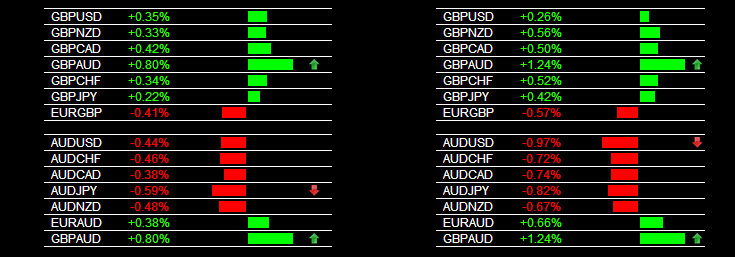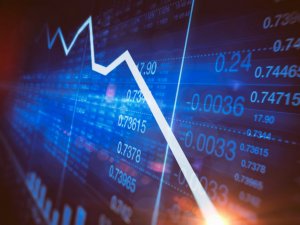We can debate how to define a forex trading strategy but in the end, is it really important? We believe it is more important what elements are crucial and how to use them so you know you have a strategy. It is needless to say that without one you are blind and not make very far in forex trading.
The Definition
We can find many definitions online but here is one that is simple but covers what is important: A strategy is a set of skills, tools, and information that consistently generate profitable trading decisions. We emphasize the word – consistently, so only when you have something that works over a long time you know that strategy has a meaning. It does not mean every trade or month has to be a winner, professionals usually take several positive months to conclude their trading strategy is consistent. The goal is to have profited from trading, however, we would not plan to gain percentages as goals right away simply because pursuing them might set beginner traders to think about winning only, whereas the true effect on the bottom line is about eliminating losers. Here is how to know you are on the right track to having a good strategy.
The Skill Element
Before all else, you need to be true about it. Follow your plans or everything you designed goes to waste. Your mindset has to be right to pursue any strategy or you are just playing games with yourself. Now, some traders do not rely on tools such as indicators, but they look at the charts at different timeframes and look at how the price is moving. Patterns, volume, and other aspects of the market are considered but they also consider what is going on with other markets, currencies, and any information that moves the upside/downside scale in their heads. This is the skill element of the strategy, and it takes a while to learn fundamental analysis and chart reading. Of course, there are other ways to trade where other skills are developed and could be used in a strategy.
The Tools Element
One example is the use of indicators and rules for them. Technical traders do not want to rely much on their subjective analysis of the charts or events that drive the markets. They may have an opinion or predictions but they do not trade until their indicators confirm it. Even if they think otherwise, they listen to their tools. Their skill is to be able to create a setup of different indicators that jointly create consistently good decisions. This skill to combine the right tools also requires a lot of work.
Technical traders are focused on indicators research and how they can make for a better overall performance with the others. They understand probabilities, statistics, and gauge what tools could mitigate losses. Also, when it is better to create a rule, like closing all trades on Fridays, they implement them into the strategy mix. Technical traders even use indicators for their money management if needed. It could be said that Price Action traders rely on fuzzy values while technical traders prefer precise points where they put Take Profit and Stop Loss orders, for example.
The Consistency Element
Consistency is probably the hardest strategy element to achieve. You can have a strategy with inconsistent results but we regard that as an inconclusive trading solution. It is not a strategy that works in the long term. A car that does not move is not really a car, just a pile of materials.
No strategy works every time on every market. And that is why traders spot the best market behavior for their strategies or develop different strategies for different market conditions. They look for ways to attain consistency with their strategies since they make losses in certain situations. That can only be avoided if they wait for a new period of right market conditions. Traders then implement rules to their strategies. The right market conditions have to be spotted. Technical traders have tools or indicators for that while plain chart readers just observe the candles. Forex trading is directional trading so traders of both kinds often look at the volatility and volume. They make rules based on these measurements and pick only volume/volatility levels where their strategies work best. That is why forex, precious metals, stocks, commodity traders have different strategies.
It is not rare to see mixed strategies, technical indicators with fundamental analysis. These traders take into account more data but often they come up with conflicting signals and therefore need more time for a good setup. Does it mean it is better to mix different analyses to attain consistency? Not really, you can see pure PA or indicator traders that perform exceptionally well.
Consistency can be achieved with a certain strategy, but as said in the beginning, a trader has to be consistent first. This side of trading is not in focus by beginners because working on the psychological part is not fun and you will not see it by reading strategy definitions. Therefore, we would also widen the consistency strategy element to the trader psychology too. This is also a skill, a rule, a tool, name it how you wish, but it is a requirement for any strategy to work. Traders that attain consistency with themselves and with the strategy are the elite in forex trading. They have one of the best “jobs” when we speak financially but also about their free time, stress, and resistance to side effects like different crises.
Building a strategy does not stop when it becomes consistent. A trader explores any ways that the strategy becomes either more consistent or more profitable. It does not mean a trader has to change what is already working well, but exploring other markets where such a strategy with small changes could work. More opportunities open where more profits could be made. A strategy like this is evergreen and could be regarded as a holy grail in trading.
To conclude, you have defined a strategy when you have educated yourself about how different strategies work and then design your own with specific rules, tools, or PA patterns. Have a plan for each trade this way and consider consistency building with loss elimination, money management, and having the right mindset. Only then you know you have a strategy that could be built upon as you advance.






